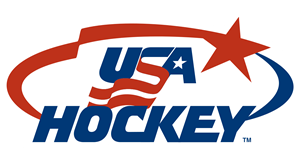Concussion and Sudden Cardiac Arrest Information and Acknowledgement
WAHA Concussion and SCA Parent/Player Acknowledgement Form
CONCUSSION FACT SHEET FOR PARENTS
CONCUSSION FACT SHEET FOR ATHLETES
Concussions can happen in any sport or physical activity. The Center for Disease Control has very good information for parents and players about concussion prevention, assessment and treatment in youth sports. You should discuss this information with your skater; and your skater should report any concerns right away to their coach if they have a fall, bump, or hit to the head. Our coaches receive training concerning concussion prevention and assessment. Concussion symptoms may occur after the incident, even a day later. It's important for parents to know the symptoms of concussion. If you think your child might have a concussion, he or she should see their medical provider to be assessed as soon as possible. The doctor will determine when it is appropriate for your child to return to play. FVYHA provides baseline ImPact Testing in the fall for our skaters 10 and over to help your provider manage concussion if needed.
Sudden Cardiac Arrest
Sudden Cardiac Arrest (SCA) is a life-threatening emergency that occurs when the heart suddenly stops beating. It strikes people of all ages who may seem to be healthy, even children and teens. When SCA happens, the person collapses and doesn’t respond or breathe normally. They may gasp or shake as if having a seizure. SCA leads to death in minutes if the person does not get help right away. Survival depends on people nearby calling 911, starting CPR and using an AED (if available) as soon as possible.
Recognize The Warning Signs:
- Fainting/blackouts (especially during exercise)
- Dizziness
- Unusual fatigue/weakness
- Chest pain
- Shortness of breath
- Nausea/vomiting
- Palpitations (heart is beating unusually fast or skipping beats)
- Family history of sudden cardiac arrest at age < 50
Know the cardiac chain of survival:
- Recognize - Victim has collapsed.
- Call 911 - Call 9-1-1 and follow emergency dispatcher's instructions.
- Start CPR - Push hard and fast in the middle of the chest, 100-120 pumps per minute.
- Shock - Use an AED, if one is available and shock the person's heart.
- Advanced care - Designate a bystander to direct EMS to victim for quick transport to hospital.
SCA Fact Sheet for players and parents/guardians
What is Sudden Cardiac Arrest?
Electrocardiogram
Oops!
You have unsaved elements
Please save or cancel the pending changes to the elements within your page and then try saving again.


